Key in a search term below to search our website.
Key in a search term below to search our website.
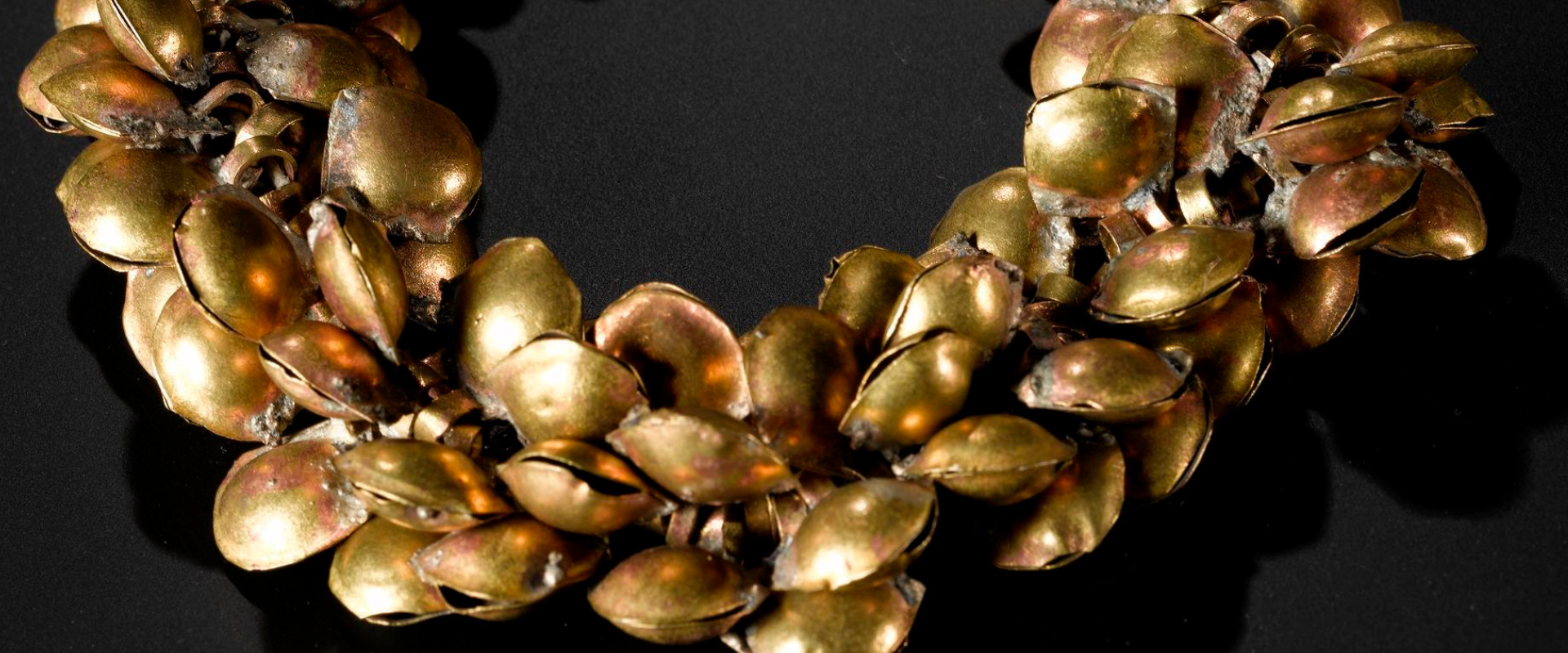
कहानियाँ Kahaniyan of South Asia
The ghungroo dance anklets can be found on Level 3 in the Performance and Lives gallery at the National Museum of Scotland.
The ghungroo anklets brought out the child in us. We were overjoyed that they are displayed in the museum. Indian women have worn anklets with bells for centuries, making them an integral part of our culture when it comes to traditional femininity and beauty. Their jingling “chum chum” sound when walking with them served as a reminder for men that there was a woman in the house. For brides, it was a way to attract the attention of their husband.
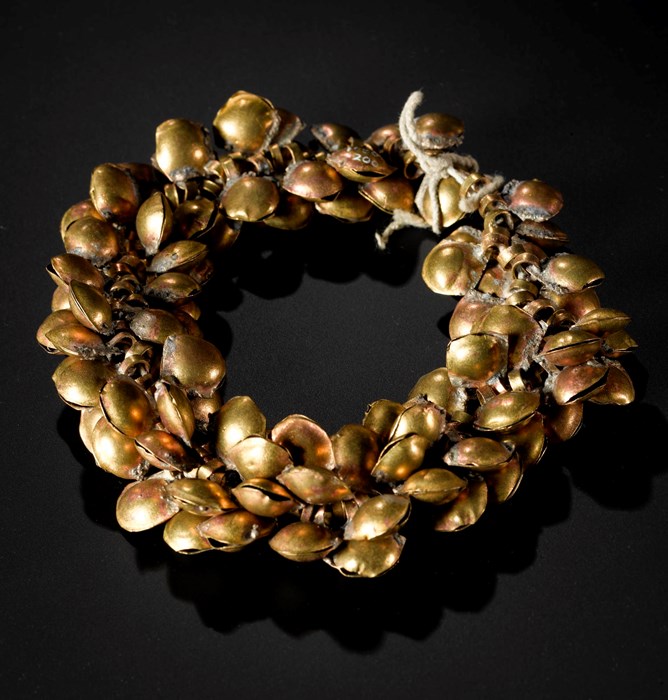
Anklet of gilded copper pellet bells, threaded onto string, worn by a dancer: India, 20th century (A.1980.200).
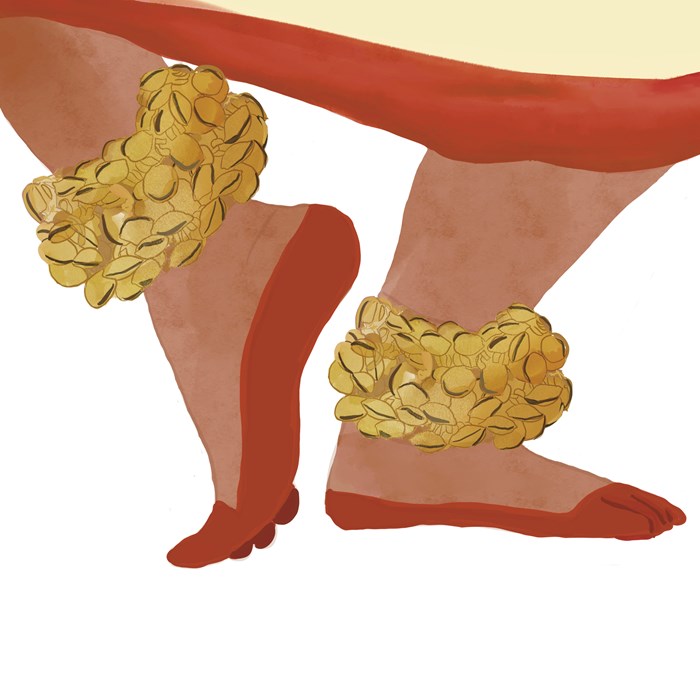
Dancer wearing traditional ghungroo anklets. Illustration by ©www.malinichakrabarty.com
This was however not the case with one participant, Neena. Belonging to a traditional Punjabi family, her father didn’t allow her to wear ghungroos as they were associated with ‘tawa’if’, or courtesan dancers. Her mum though had a different perception. For her, it was acceptable to wear payal anklets but not ghungroos. When Neena got married and came to Edinburgh, she brought ghungroos with her and encouraged her daughter to learn Indian classical dance. Her dream, however, remained unfulfilled as there was a dearth of Indian classical dance classes at that time. She has now passed on her ghungroos to her granddaughter, hoping that she will utilise them. Neena’s three-generation story is sad but important to tell as it illustrates a deep-rooted taboo in our South Asian society.
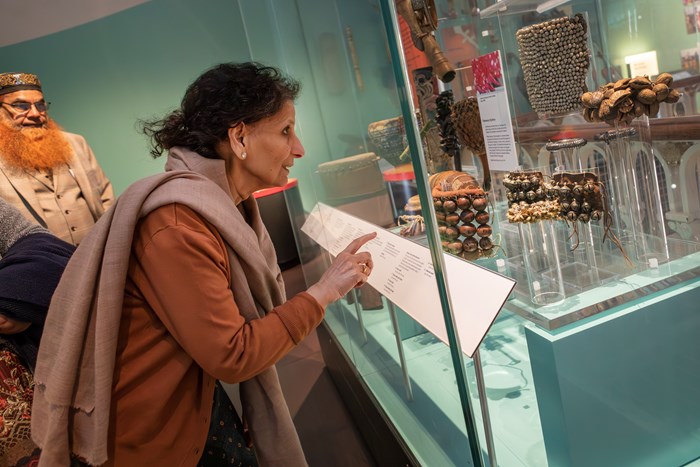
Neena admiring the ghungroo anklet in the Performance and Lives gallery. ©ruth@rutharmstrong.com
It is noteworthy here that there are ghungroo and payal anklets. They are from the same family but different. Ghungroos are especially worn by dancers whereas the payal anklet is an evolved version of ghungroos, having a very sleek design and only a few bells. They are worn by women for adornment. Ghungroos are considered sacred to every Indian classical dancer. They worship them before tying them to their legs prior to their performance. A child or a novice dancer may start with using 50 bells. They will gradually add more as they mature and progress in their technical ability. By the end of one’s learning, a dancer can handle 200 bells on each leg.
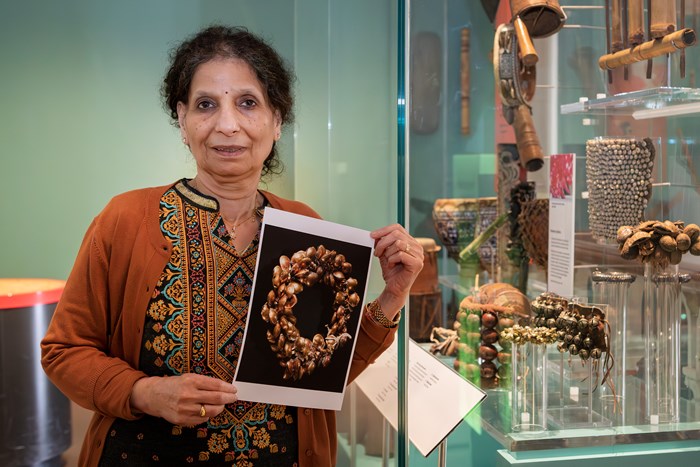
Discovering the ghungroo anklets brought back many memories for Neena. ©ruth@rutharmstrong.com
Another participant brought a very interesting point forward with regard to payal anklets. They have their significance in Hinduism for two reasons. Firstly, an unmarried Hindu woman is gifted a pair of payal by her would-be husband as a symbol of union and love. Secondly, payal are supposed to be of silver but not gold. According to Hindu philosophy, gold is the metal of God and therefore sacred. Since payal anklets are worn on the feet, which are the lowest part of the body, it is considered disrespectful or an ill-omen to wear them in gold.